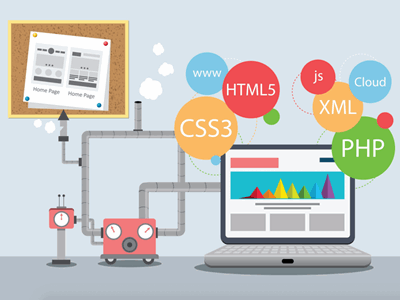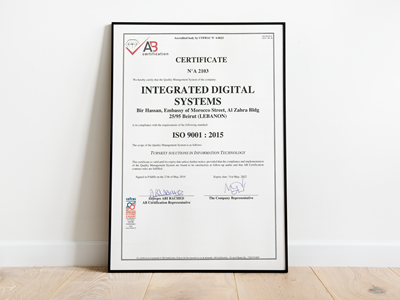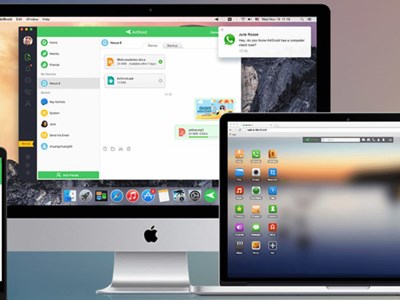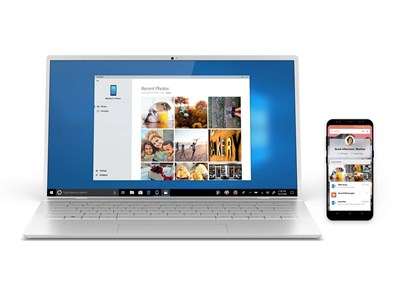Today’s AI is tomorrow’s taken for granted.
It’s an insight you’d expect to hear from, maybe, Watson parent IBM, Alexa’s mom, Amazon, or even Facebook CEO Mark Zuckerberg talking about “M.” The source, however is Microsoft Corporate VP for Microsoft AI & Research Group Andrew Shuman who was trying to set the stage for what should be some significant artificial intelligence announcements next week at Microsoft’s annual Build developer’s conference.
Microsoft has been in the artificial intelligence game for a long time, Shuman reminded me, especially from a Microsoft Research Standpoint. They’ve used it to build speech processing and “We’re one of only two companies that created a world index of the web [Bing], which takes a lot of AI.”
However, the recent surge in artificial intelligence developments has created an AI land-rush, where it seems like every tech company, including Microsoft, is promising to do more with machine learning and cognitive computing.“If I think about the kind of AI revolution that’s going on, it’s very much created by new increase in data being available and cloud service being able to run millions of computations,” said Shuman.
Microsoft certainly has the data, thanks to over 100 million Office 365 subscribers and, in OneDrive, it has the cloud-based services.
Kirk Gregersen, Microsoft Partner Director of Program Management, told me the shift to the cloud has helped accelerate innovation. More importantly, though “The cloud is also capable of harnessing large quantities of data and signals.”
That’s the kind of information that can power impressive AI feats.
One difference between Microsoft’s AI efforts and everyone else’s though, is that Microsoft’s are not so much in your face. They’re more like a little, anonymous factory robot, accepting requests and then zipping off to aisle 226 to find the exact blue blazer you didn’t even know you wanted.
Take Office, for example. It’s already brimming with little AI touches.
AI in Office
Anyone who has used Microsoft’s Office productivity suite knows that it has far more features than you could ever use.
“There’s lots of deep functionality that, for years, has been challenging for users, even experienced ones. AI makes it easier to unearth,” said Gregersen.
In PowerPoint, for example, the Quick Starter uses AI to help find the right template based, sometimes, on a single word you type into one of the slides. Behind the scenes, it’s looking at the vast well of structured Bing data.
The Designer service is also looking at presentation images, finding faces and even colors that can influence template design choices.
Much of the PowerPoint’s intelligence is designed to combat “blank page syndrome,” which Gregersen told me afflicts many students who must make a presentation.
“Usually they just go to Wikipedia and just copy something,” he said, “We now help them with facts about topics and explanations about sourcing.”
Microsoft’s AI can even enrich PowerPoint presentations in ways that most users don’t. A cognitive vision system analyzes photos and auto-generates Alt-Text for them. It doesn’t always get it right, but Gregersen told me that even that feedback helps improve the AI’s ability to identify future images.
The team is also refining AI that can tell when presentation text is a process-related and then suggest diagrams that illustrate that process.
The Focused Inbox option in Outlook is also powered by cloud-based machine learning, with the system learning through explicit and implicit actions. Moving to the box is explicit. Replying to more emails from one person as opposed to another implies that that person and maybe the subject are more important and adjusts accordingly.
"Intelligence is something that we build on incrementally Want to give people a sense of control," said Gregersen.
Gregerson said the Focused inbox has become especially popular in the Android and iOS versions of Outlook.
Similarly, Word users have been using Microsoft AI-based services for years, primarily in writing assistants like spell check and grammar, which now go beyond flagging obvious mistakes to suggesting more stylistic changes like using “must” instead of “have to.”
Gregersen said the these “Gold Squiggles” (what appears under the flagged prose) are expanding to look for inclusive language and even gender bias in writing.
“It was hard to do this in the past without large language models and machine learning,” he said.
Of course, “all the control is in the hands of the users,” he added.
End-user control is a common theme across all of Microsoft’s AI efforts. They want these tools to be personalized to you. Changes that you frequently reject in Word may no longer be flagged in your writing.
The Cortana Problem
There is, though, no more public face for Microsoft’s AI work than Cortana.
Residing in hundreds of millions of desktops around the world, Cortana’s the voice assistant nobody uses. Instead, most Windows users simply type their queries into the text box that sits right next to the Start button.
“Cortana has to be a typing first experience,” said Shuman, adding that people still don’t speak to their computers.
As we spoke over the phone, I heard Cortana’s familiar voice pipe in.
“Anytime I talk about Cortana, have to remember to turn her off first. Occupational hazard, can’t talk about the one thing I work on,” he laughed.
Just because everyone isn’t speaking to their computers, hasn’t dampened Microsoft’s efforts to position Cortana as the face and voice of its AI efforts.
Its recent Windows Creators Update inserts Cortana into the setup process and Microsoft has tried to seed competition platforms with Cortana, building mobile apps for iOS and Android.
On the mobile side, Microsoft has had little choice, Its Windows Phone market share is miniscule and still shrinking, but that doesn’t mean anyone will install Cortana on their iPhone, especially when they already have Apple’s Siri voice assistant. Shuman, though, remains optimistic.
“A fair amount of companies that have succeeded without a mobile presence,” Shuman said. He also thinks Microsoft can lead in this space by “being smarter, more intelligent and naturally in flow.”
Maybe, but Cortana won’t become a household name on the AI front without a dedicated hardware home outside the PC. The company might unveil so-called Cortana Speakers next week or, just maybe, a Windows Phone reboot.
Even though Microsoft needs a strong consumer-facing AI story, the company could spend much of Build’s 30-plus AI sessions talking about tools for developers.
“We’ve taken a lot of Microsoft research pieces and started publishing a lot of programming interfaces in Azure,” said Shuman. In other words, third-party developers will be able to tap into Microsoft’s cognitive API’s and massive cloud-based Azure service to build speech, image and language intelligence in their own apps. The company has already been testing developer tools that allow third-party chatbots inside Bing search results.
I asked Shuman why Microsoft doesn’t consolidate all their AI efforts behind the Cortana brand, similar to what IBM has done with Watson.
Shuman is not convinced that’s the right approach. “I think we need to be careful about where we make it Cortana and where we don’t. To me it implies a full set of capabilities instead of little nuggets.”
Even without Cortana as the lead AI brand name, Shuman stands by Microsoft’s strategy.
“We are without a doubt infusing intelligence and understanding in all of our products in ways that’s very shared and shareable,” said Shuman.
And in ways that may be eventually taken for granted, which would be according to plan.













Comments